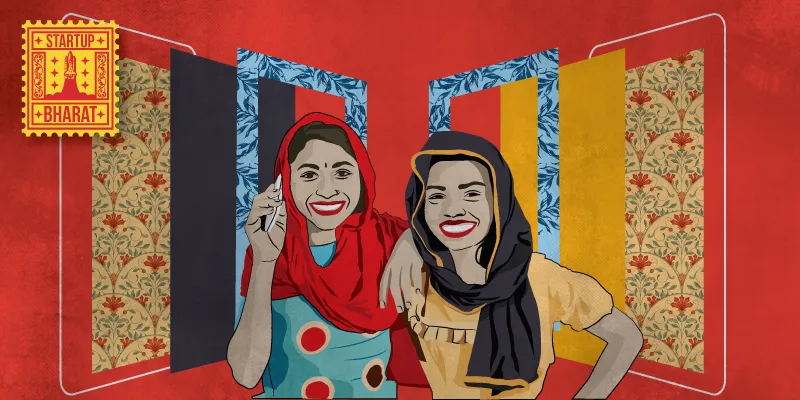[Startup Bharat] How consumers from Tier II and III cities are powering India’s growth
From unicorns to larger brands, everyone today is looking to cash in on the next set of customers: Bharat. Let’s take a closer look at what Tier II and III consumers really want.
A few years ago, everyone was talking about just one consumer - the urban Indian millennial. From booking a ride and buying movie tickets to shopping online – millennials used an app for everything to meet their daily needs. And then food delivery apps and other hyperlocal delivery players slowly made headway – only to make our lives easier.
But today, the scenario is different. The 300-million-plus urban consumers need not be wooed anymore. It is time to now focus on the remaining 500 million users from rural and smaller towns - the Bharat. With over 530 million internet users, India has the second largest internet user base in the world today.
Affirming this yet again is Amitabh Kant, CEO, Niti Aayog, who said at an event recently that with over 400 million users, India has become WhatsApp’s largest market.
With the growing number of internet users in Tier II and III cities, Indian language content apps have also witnessed growth. These consumers are also mobile-first users.
However, the shift happened from 2016 onwards, with the launch of Reliance Jio. The data costs dropped by a whopping 93 percent from pre-Jio rates, which means over 65 million users on an average adopted the internet every year.
With the blurring of lines between the aspirations of rural and small-town consumers and people living in larger cities, both brands and startups have now started taking a closer look at the Bharat consumer.
Regional language content powering growth
It is no surprise that ecommerce companies like Amazon, Flipkart, Licious, Swiggy, Zomato, and many other startups are using Indian language to spur growth. These companies are also looking at ways to give consumers a greater experience despite a lower bandwidth connection.
“Language is the first step to break into a market like India. Once that is broken in, you have at least 700 million to 800 million users. That base is massive,” explains an analyst.

Consumption patterns by Tier II and III cities
Today, the 450 million Hindi speakers in India are twice as big a market as our country’s 220 million English speakers. Apps like DailyHunt, ShareChat, TikTok, and several others are also targeting this very market.
Further, cultural diversity means a lot of puns, memes, and video content that is culture-specific, and far more disparate in nature.
“Facebook and Google currently account for up to 80 percent of Indian digital ad spend. Given the growth of vernacular platforms like Dailyhunt and TikTok, both in terms of user base and time spent, we expect a fundamental shift in the digital ad spend where these platforms take a larger share of the pie,” says Ujjwal Chaudhry, Director, RedSeer Consulting.
High aspirations, limited access
According to a report by The Indian Economist, the consumers in Bharat have high aspirations, but have limited access to products and brands on their phones. While they prefer platforms to be in their native language, they also want cash-on-delivery as their preferred payment method. They will eventually move to digital wallets.
The consumption expenditure in India is believed to touch $4 trillion by 2025, and is expected to have a 12 percent year-over-year expenditure growth. This mostly stems from increasing affluence, evolving consumer behaviour, and spending patterns.
Owing to these shifts, there has been a steady increase in the spending behaviour of these consumers as well. While online shopping has become more social, there is also a need for instant gratification for consumers from smaller towns, much like for the urban consumer. And this can be attributed to different purchase patterns, discount offers, and trade-off decisions.
And it doesn’t stop at ecommerce. The aspirations of rural consumers are also rising to match urban dreams. Today, the consumer from a smaller town is looking for not just a house and a car, but an international vacation as well. They are also willing to pay the price for the comfort. Social media, in that sense, plays a big role in influencing these consumers.
Demonstrating this shift in consumer behaviour is Zomato. The food delivery platform, earlier this month, announced it has its delivery presence in over 500 cities across India.
Mohit Gupta, CEO, Food Delivery, Zomato, says:
“We follow a data-driven strategy to decide potential cities encompassing a measure of the overall population, student population, and restaurants. It is a delight to witness first-day tales from lesser-known cities like Giridih in Jharkhand (population of around 1.5 lakh) clocking over 1,000 orders/day and all restaurants in Gudivada in Andhra Pradesh (population of over 1 lakh) running out of food by lunchtime, on the very first day.
He adds, "While the growth in the top 15 cities has tripled in the last 12 months, our emerging cities now contribute 40 percent to our business. We are excited to change the paradigm of food as we continue to let every bit of India get a taste of Zomato.”
The summer of ecommerce
It’s not just Zomato, but Swiggy too is present in over 290 cities across India today. From Visakhapatnam and Indore – it has made inroads to many Tier II and III cities.
And it’s not just the story of online food delivery. Ecommerce, as a whole, is fast picking up in these regions as well.
A report by RedSeer states that the growth in the number of online shoppers in Tier II and Tier III cities and rural areas is expected to outpace those of urban areas. It says, close to 70 percent of the etailing GMV would be coming from Tier II and rural areas by 2023, which currently stands at 40 percent.
This rise can be attributed to evolving user preferences in these smaller cities. The younger population in these regions are open to experimentation, and like the options that online shopping provides them.
Banking on this trend, ecommerce players like Amazon, Flipkart, and Snapdeal also started the big discounting game since 2017. Since then, there has been an increase in the number of consumers in Tier II and III sities. Today, over eight out of 10 online marketplace transactions in these regions are happening over the phone.
The primary reason, according to The Indian Economist, is because there is a dearth of alternative devices. Also, the consumers prefer the ability and ease of making transactions whenever and wherever, which the smartphones provide.
With all these shifts in consumer behaviour, it will be interesting to see how this market actually begins to perform.
“It needs consistency, time, and patience,” says an analyst. So, the one who has all three in abundance, along with the capital, might just be able to crack it.
(Edited by Megha Reddy)


![[Startup Bharat] How consumers from Tier II and III cities are powering India’s growth](https://images.yourstory.com/cs/2/a9efa9c0-2dd9-11e9-adc5-2d913c55075e/The-Next-billion_Startup-Bharat1565694536657.png?mode=crop&crop=faces&ar=2%3A1&format=auto&w=1920&q=75)

![[Startup Bharat] Why investors are making a beeline for Kerala’s burgeoning startup ecosystem](https://images.yourstory.com/cs/2/79900dd0-d913-11e8-a160-45a90309d734/Investment-patterns-in-Kerala21562670571354.jpg?fm=png&auto=format&h=100&w=100&crop=entropy&fit=crop)
![[Startup Bharat] How healthcare startups in Tier II and III cities are solving the problem of a...](https://images.yourstory.com/cs/2/a9efa9c0-2dd9-11e9-adc5-2d913c55075e/Healthcare-startups_Feature-image_YourStory1559663781783.png?fm=png&auto=format&h=100&w=100&crop=entropy&fit=crop)




